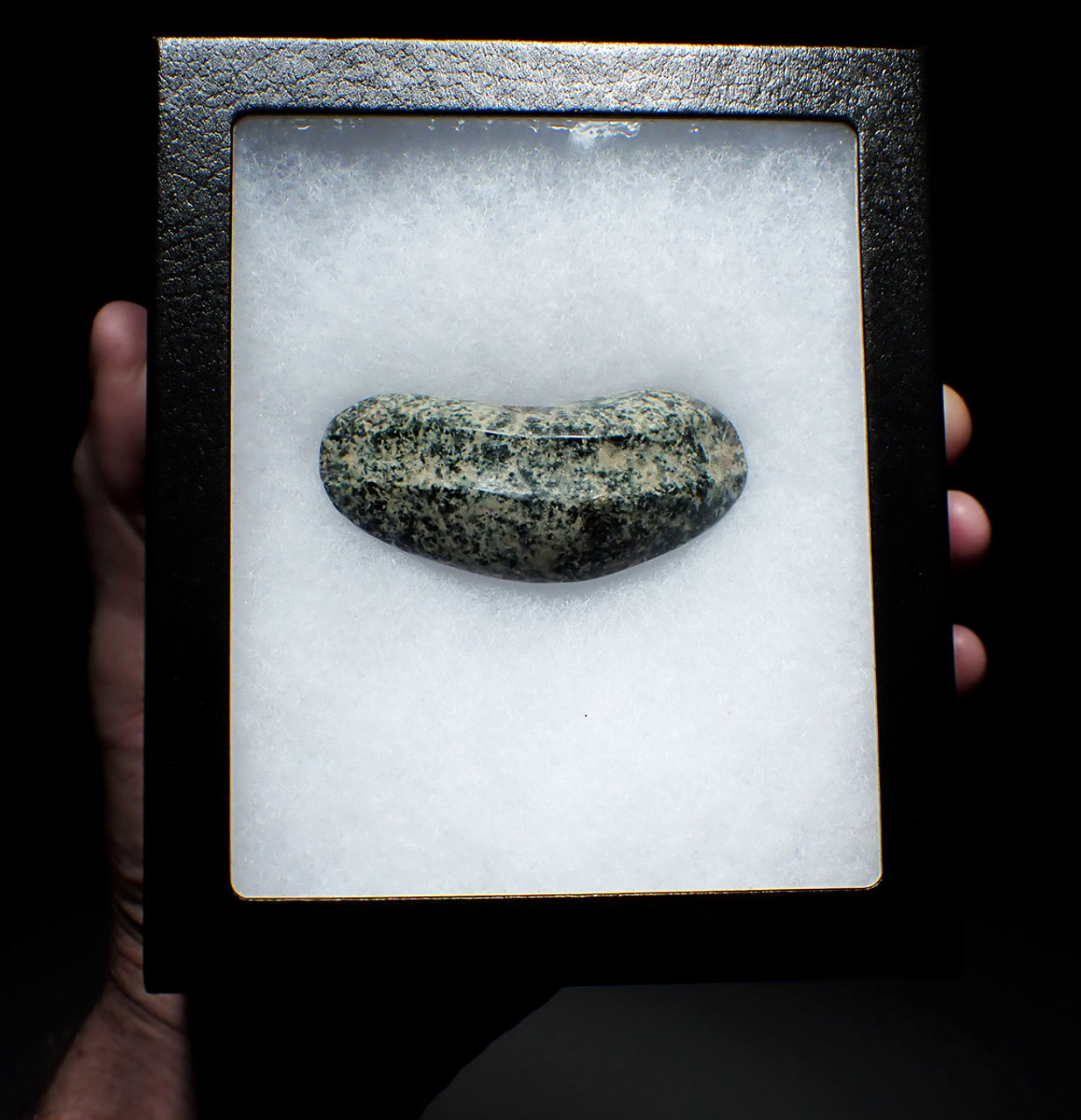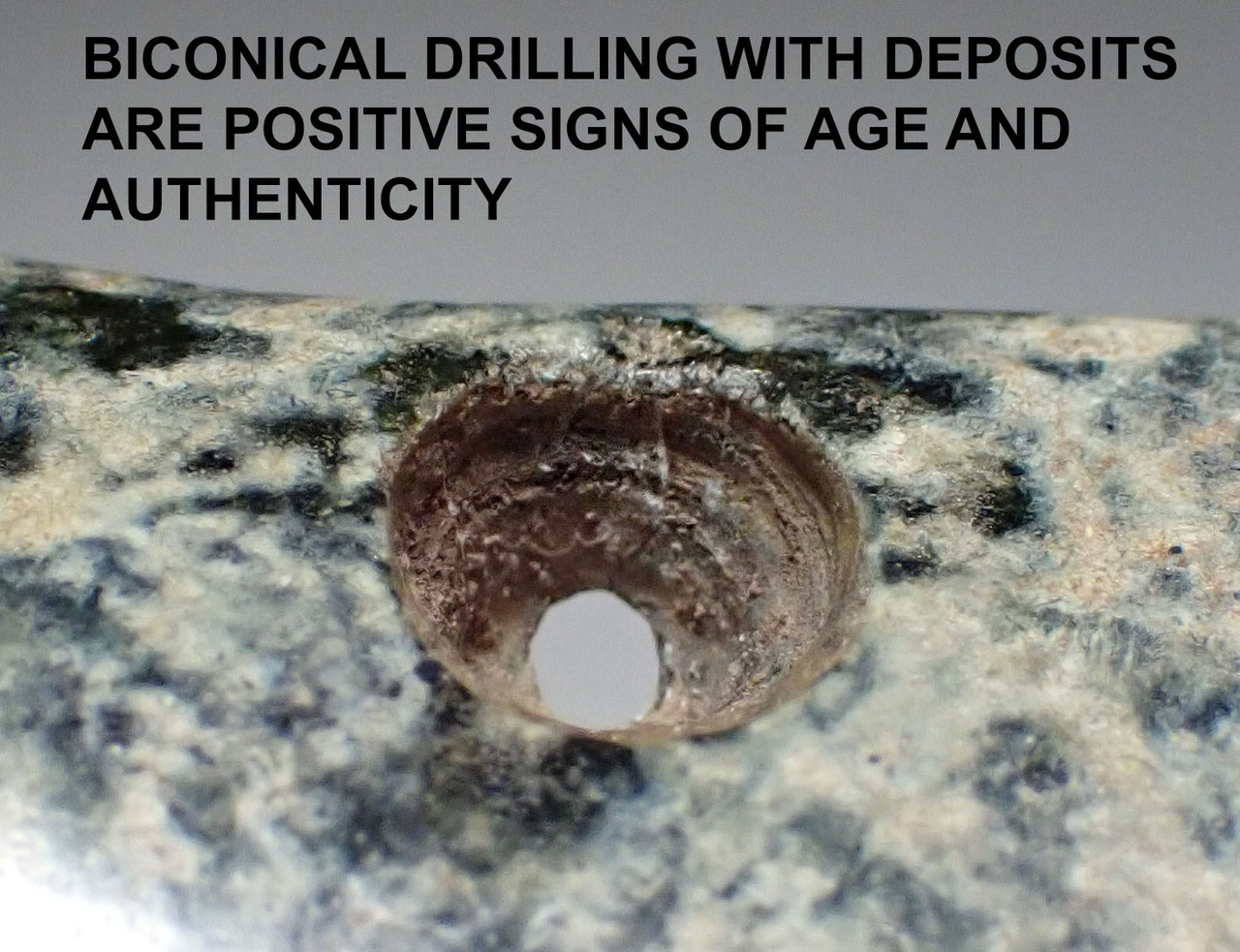Product Description
SEE MORE PRE-COLUMBIAN ARTIFACTS
SEE SOME SOLD MEZCALA STONE OBJECTS HERE
The enigmatic Pre-Columbian carved stone objects from the mysterious Mezcala Culture have brought five, and six figure realized prices in major auctions around the globe. The cycladic art style of these RARE and highly sought after Pre-Columbian pieces is unrivaled in Mesoamerican ancient art. The unusual Mezcala carved stone figures have been revered and worshipped by later Pre-Columbian cultures such as the inhabitants of Teotihuacan, and the Aztecs, who went to the trouble of digging them up and interring them into their own temples! The abstract artistic nature of these objects is so unusual and unique that immediately by sight alone, they are recognizable for their culture! The "extra-terrestrial" resemblances of their figural carvings have led some to theorize these objects document ancient alien representation and contact by early Pre-Columbian societies. Whatever their original intention, these fascinating effigies remain completely inexplicable to science.
Offered here is an abstract carved large polished amulet pendant. It has a prominent groove across the front face and a bi-conically drilled hole in the top for wearing. It is complete and features supreme preservation with choice workmanship and polishing. Since this is a pendant, the original bi-conical drilled holes are perfect with interior surfaces coated with ancient calcite deposits - a trait only seen in authentic examples. Yes, it is wearable! Carved stone Pre-Columbian objects are exceedingly more rare than ceramics due to the time and work involved in creating them compared to much easier manufactured ceramic pieces.
HISTORY
The Pre-Columbian Mezcala Culture is a little understood culture that was based in present-day Guerrero, Mexico. A long, complex culture history of the Guerrero region prevents a finite understanding of who exactly made Mezcala objects. The culture is also called Balsas Culture because it is centered in the upper Balsas River drainage region. It is believed the Mezcala style emerged during the Pre-classic Period, between 700-200 B.C. and continued on into Classic Period to 650 A.D..
Objects attributed to the the Mezcala Culture include figurines, masks, small effigies of animals and objects, beads, pendants and earplug flares. They are carved from a variety of green, gray-green, gray and black color hardstones and jade. The art style is so unique that Mezcala objects are readily recognized for their abstract and minimalist anatomical features. Some Mezcala style stone objects show strong Olmec influence. Beautiful stylized masks from Guerrero exhibit Teotihuacan Classic Period influence. Mezcala style objects were excavated by the much later Aztec peoples and revered as sacred objects.
Mezcala style stone carved figurines have a basic petaloid axe form and are sometimes casually labeled "axe gods". Symmetrically arranged cuts in the stone are arranged to resemble facial and body features. Scarcer objects depict human forms in seated or crouching positions. Carved stone masks are found in more diverse forms from abstract to beautifully stylized renderings. Clay figures and pottery are also known but the culture is most famous for its unique carved stone objects.
 US DOLLAR
US DOLLAR
 EURO
EURO
 AUSTRALIAN DOLLAR
AUSTRALIAN DOLLAR
 CANADIAN DOLLAR
CANADIAN DOLLAR
 POUND STERLING
POUND STERLING
















